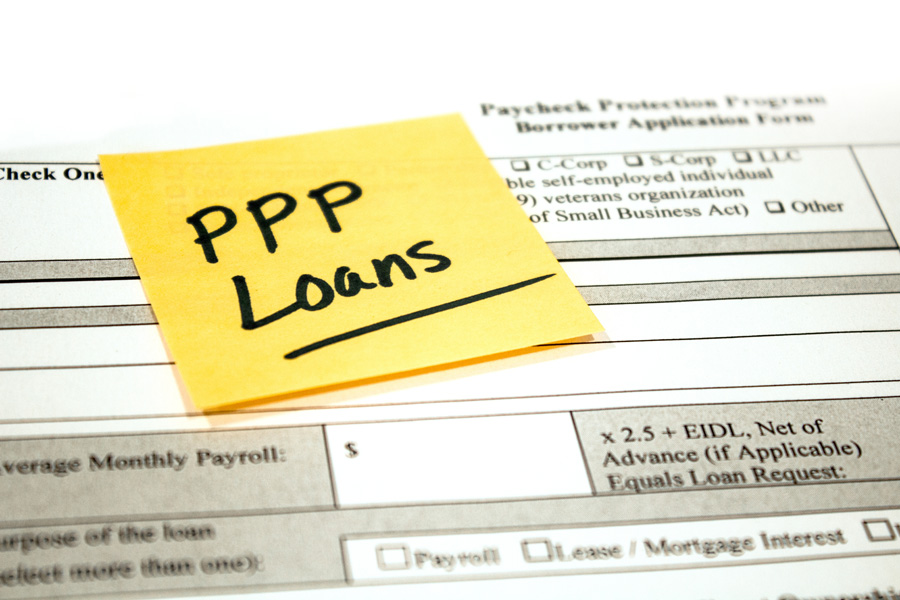On June 5, 2020, President Trump signed into law legislation known as the “Paycheck Protection Program Flexibility Act of 2020” or the “PPPFA” which modifies provisions under the Paycheck Protection Program (the “PPP program”) passed by Congress earlier this year. Changes under the PPPFA provide borrowers with greater flexibility regarding use of funds and loan forgiveness terms under the PPP program.
A summary of key provisions of the PPPFA is provided as follows:
• Covered Period Extension. The PPP program requires a borrower to spend loan proceeds within eight weeks of the PPP loan disbursement date (the “Covered Period”). Under the PPPFA, a borrower can extend the Covered Period from the PPP loan disbursement date to the earlier of (i) twenty-four weeks from the PPP loan disbursement date or (ii) December 31, 2020.
• Reduced Minimum Payroll Costs Threshold. Under the PPP program, a borrower was required to spend a minimum of 75% of funds from a PPP loan on eligible payroll costs and the remainder on eligible non-payroll costs, which include mortgage obligations, rent or lease payments, and utility costs. Under the PPPFA, a borrower is required to spend 60% of funds on eligible payroll costs. This reduced minimum threshold must be satisfied for a borrower to qualify for loan forgiveness.
• Payroll Tax Deferral. The Coronavirus Aid, Relief, and Economic Security Act (the “CARES Act”) provides a business with the option to defer the employer portion of payroll tax for 2020 (the “2020 Payroll Tax Obligation”) so that one-half of the 2020 Payroll Tax Obligation is due December 31, 2020 and the other half is due December 31, 2021. Under the CARES Act, if a business received loan forgiveness under the PPP program, it was then not eligible to defer the 2020 Payroll Tax Obligation. Under the PPPFA, a borrower can defer the 2020 Payroll Tax Obligation regardless of whether it received loan forgiveness.
• Modified Loan Forgiveness Amount Reduction Based on Full-Time Equivalent Employees. Determining loan forgiveness under the PPP program factors into account a reduction amount which is calculated by multiplying a borrower’s forgivable loan amount by a fraction which consists of the average number of full-time equivalent employees (“FTEs”) during the Covered Period, divided by either (a) the average FTEs between February 15, 2019 and June 30, 2019, or (b) the average FTEs between January 1, 2020 and February 29, 2020. If an employee was terminated between February 15, 2020 and April 26, 2020, then a borrower can rehire the terminated employee prior to June 30, 2020 to be included in the forgiveness reduction test formula. Under the PPPFA, the rehire provisions remain unchanged to determine loan forgiveness, except to extend the rehire deadline to December 31, 2020. Moreover, the forgiveness reduction test is disregarded if a borrower satisfies any one of the following two conditions: (i) it is unable to rehire a terminated employee or hire a similarly qualified employee to replace the terminated employee, or (ii) it is unable to return to a business activity level similar to the business activity level as of February 15, 2020 due to guidance issued by the Department of Health and Human Services, the Centers for Disease Control and Prevention, or the Occupational Safety and Health Administration between March 15, 2020 and December 31, 2020, regarding the maintenance of standards for sanitation, social distancing, or any other worker or safety requirement related to COVID-19.
• Extension of Loan Repayment Period. Under the PPP program, a borrower was required to repay a PPP loan within two years. Under the PPPFA, a new borrower has five years to repay a PPP loan and an existing borrower is eligible for a five-year extension provided that it is approved by the lender. The interest rate on PPP loans remains unchanged at 1%.
Overall, changes under the PPPFA are expected to be well received by many borrowers participating in the PPP program. The PPPFA provides favorable modifications to determine the amount of loan forgiveness, extends the period to use funds and lowers the threshold amount required to be spent on certain costs to qualify for loan forgiveness.


